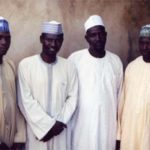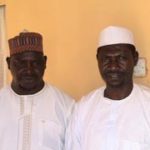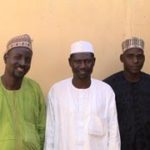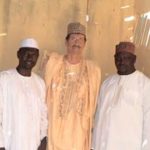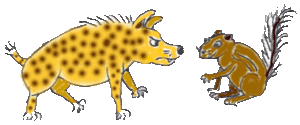Ngamo
The Ngamo Language
Ngamo is spoken in Yobe State, Nigeria, in the area to the south and west of Potiskum, the largest city in Yobe State.
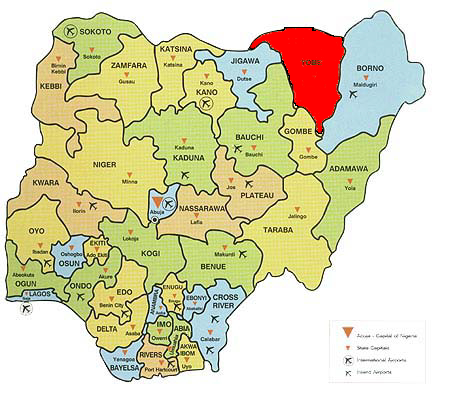
It is one of seven languages of the Chadic family indigenous to Yobe State, the others being Bade, Bole, Duwai, Karekare, Maka, and Ngizim:
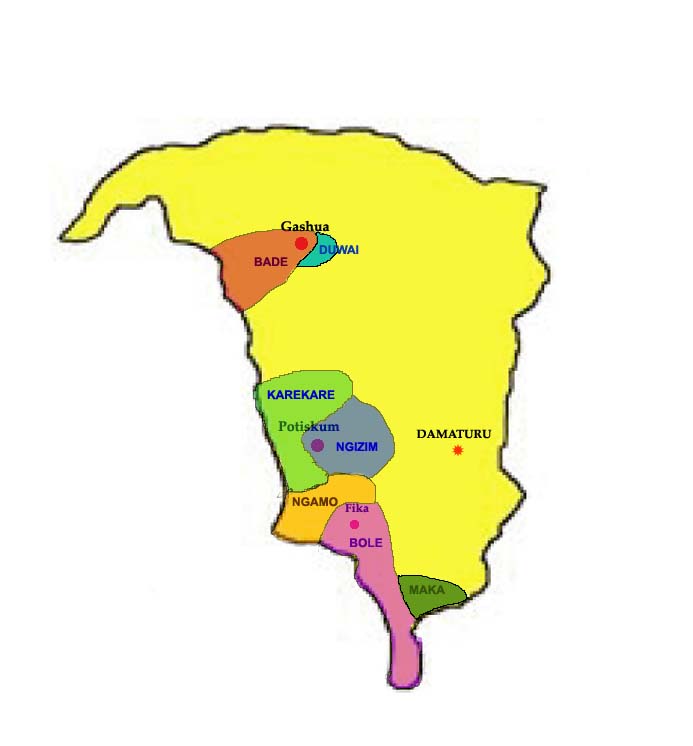
Ngamo is a member of the West Branch of Chadic and is hence related to Hausa, the dominant language throughout northern Nigeria. Ngamo’s closest linguistic relatives are, however, its neighbors, Karekare, Bole, and Maka.
The Ethnologue gives a figure for 60,000 as the number of Ngamo speakers, which seems not unreasonable. The pre-eminent traditional ruler of the Ngamo people is Mai Gudi, Alhaji Isa Bunuwo, whose court is located in Gadaka, about 50 kilometers south of Potiskum.
There are two major dialects of Ngamo, the Gudi dialect and the Yaya dialect. The dialects are different enough from each other in phonology, morphology, and lexicon that they border on being separate languages, but there is fair mutual intelligibilty, which justifies grouping them as dialects of one language. The origin of the name “Ngamo” is not known. This root is used both as an autonym and by linguistic neighbors.
| NGAMO | HAUSA | KANURI | |
| People | Ngoi Ngamo (m), An Ngamo (f) Ngamaye (pl) |
Bangamo (m), Bangamuwa (f) Ngamawa (pl) |
Ngamo |
| Language | bo Ngamo ‘mouth/language [of] Ngamo’ |
Ngamanci | Ngamo |
Research on Ngamo
Essentially all the material on this website derives from the Yobe Languages Research Project. This project has been supported by two awards from the US National Science Foundation. The first, “The Chadic Languages of Yobe State, Nigeria” (award #BCS-0111289, Russell G. Schuh, Principal Investigator), ran from 2001-2004. The second, “Lexicon, Linguistic Structure, and Verbal Arts in Chadic Languages of Northeastern Nigeria” (award #BCS-0553222, Russell G. Schuh, Principal Investigator), ran from 2006-2009. Directors of the project under both grants are Russell G. Schuh, the Principal Investigator, and Alhaji Maina Gimba, the In-Country Director. From 2002-2004, members of the Ngamo team were Umaru Mamu Goge, Jibir Audu Janga Dole (both speakers of Gudi Ngamo), and Isa Adamu Gashinge (a speaker of Yaya Ngamo). Because of limitations of time and resources, it was decided for 2006-2009 to focus Ngamo research on the Gudi dialect, though some new data on Yaya Ngamo was collected in 2009, and more than half of the material in the 2009 collection of Ngamo verbal arts is in Yaya Ngamo. The members of the Ngamo team are Umaru Mamu Goge and Jibir Audu Janga Dole for Gudi, with Isa Adamu Gashinge providing Yaya data. Thanks go also to HRH Alhaji Isa Bunuwo, Mai Gudi for his support and to Madu Liman and his family for indispensable logistic support.
- L to R: Jibir Audu Janga Dole, Alhaji Maina Gimba (In-Country Project Director), Umaru Mamu Goge, Isa Adamu Gashinge
- Umar, Gimba, Jibir, Schuh 2009
- Umaru Mamu Goge, 2009
- Jibir Audu Janga Dole, 2009
- Isa Adamu Gashinge, 2009
- Isa, Gimba 2009
- Umar, Gimba, Jibir 2009
- Gimba, Schuh, Isa 2009
Ngamo Greetings

The movie below lets you hear some typical Ngamo greeting exchanges.
Ngamo Verbal Arts
The Yobe Languages Research project has produced several collections of “verbal arts”, including descriptions of customs, folktales, proverbs, riddles, superstitions, and song texts. Most collections have contributions in both the Gudi and the Yaya dialects. Click on the links below to see downloadable Ngamo texts with translations.
- Traditional marriage and birth customs [Yaya dialect] (2002)
- Tales in Gudi Ngamo (2003)
- Tales in Yaya Ngamo (2003)
- “Verbal arts” in Gudi Ngamo (2004)
- “Verbal arts” in Yaya Ngamo (2004)
- Tales, proverbs, idioms, traditional beliefs, and riddles in Gudi Ngamo (2007)
- Tales, songs, and traditions (2009)
 |
Traditional Marriage and Birth CustomsThese are texts from Al’adun Aure da Haihuwa a Al’ummun Yobe [Hausa: Customs of Marriage and Birth among Yobe Peoples], a collection published in Potiskum in 2002 by the Yobe Languages Research Project. The collection comprises descriptions of marriage and birth practices among five Yobe groups: Bade, Bole, Karekare, Ngamo, and Ngizim. Click on the links below for the Ngamo (Yaya dialect) texts with line by line English translation. |
Shida Babnok a Elik Ngamayi [They Way of Marriage in the Land of the Ngamos]
Zena Sun [Giving a Name (to a newborn)]
 |
NGAMO TALESDintir Bo Ngamo [Tales in the Ngamo Language] is a collection of ten traditional tales transcribed from recordings by several Ngamo storytellers. There are four stories in the Gudi dialect and six in the Yaya dialect. This collection was published in 2003 by Ajami Press, Potiskum with the support of the Yobe Languages Research Project. The tales can be downloaded in pdf format by clicking on the links below. The files are formatted line by line with Ngamo side by side with rough English translations. The translations attempt to convey the sense of the Ngamo text in understandable English, while being as literal as possible to mirror the structure of the Ngamo original |
Tales in Gudi Ngamo
“Dintir Ki Zonge Ki Haiko (1)” [“The Tale of the Hyena and the Squirrel (1)”]: A tale of the hyena, the squirrel, and the monkeys and how the squirrel led to the demise of the hyena and his family, but feeling remorse, found a way to revive them.
“Dintir Ki Zonge Ki Haiko (2)” [“The Tale of the Hyena and the Squirrel (2)”]: A tale of how the hyena and the squirrel planted beans together, but the squirrel tricked the hyena out of his share of the beans.
“Dintir Ki Gam Ki Ada” [“The Tale of the Ram and the Dog”]: A tale of how the ram and the dog decided to leave their house and live on their own, but decided that the house wasn’t so bad after all.
“Dintir Ki Turum Ki Zonge Ki Malam Bube” [“The Tale of the Lion, The Hyena, and Malam Bube”]: The story of how Malam Bube, waylaid by the lion and the hyena, tricked them into not making a meal of him.
Tales in Yaya Ngamo
“Dintir Ba Zenge Ki Ba Haiko” [“The Tale of Brother Hyena and Brother Squirrel”]: A tale of how the squirrel tricked the hyena into killing his mother to make a drum.
“Dintir Ba Zenge Ki Ba Launa” [“The Tale of Brother Hyena and Brother Trickster”]: A tale of how the hyena, because of his greed, ends up with no meat while the trickster gets a cow.
“Dintir Mande Bolo Ki Njilesu Bolo Gumaya” [“The Tale of Two Women and Their Two Daughters”]: The tale of how an obedient daughter ends of up wealthy and a wilfull daughter ends up suffering the consequences of her wilfulness.
“Dintir Lamba Ki Boto” [“The Tale of a Girl and Her Father”]: The tale of how a girl, trapped in the forest, is eventually reunited with her father.
“Dintir Ki Muskule Ki Gaja” [“The Tale of the Cat and the Rooster”]: A tale of how a rooster rescued himself from being eaten by a cat.
“Dintir Zenge Ki Kuletti” [“The Tale of the Hyena and the Hare”]: A tale of how a hare rescued himself from being eaten by a hyena.
 |
NGAMO VERBAL ARTSAsum Bo Ngamo [Wisdom in the Ngamo Language] is a collection of proverbs, riddles, superstitions, and song texts in the Gudi and Yaya dialects of Ngamo, published by the Yobe Languages Research Project in 2004 (printed by Ajami Press, Potiskum). Click on the links below to download the Ngamo texts with English translations. |
GUDI DIALECT
Sere Bo Ngamo [Proverbs in Ngamo]
Dintir Ki Ona Ka Ma’i [Riddles–“Words for Giving Over the Kingship”]
Goro Ton Ngamo [Ngamo Superstitions]
Arko [Songs] — not yet available
YAYA DIALECT
Sere Bo Ngamo [Proverbs in Ngamo]
Dintir Ki Ona Ka Ma’i [Riddles–“Words for Giving Over the Kingship”]
Arko [Songs] — not yet available
 |
NGAMO VERBAL ARTS (2007)Dintir ki Asum Bo Ngamo [Tales and Wisdom in Ngamo] is a new collection of folktales, proverbs, idiomatic expressions, traditional beliefs, and riddles compiled in summer 2007, published by the Yobe Languages Research Project (printed by Ajami Press, Potiskum). Click on the links to download line-by-line transcriptions and English translations. |
Dinitir [Tales]
- Dintir Ki Kayau Ki Ngoi Yo An Noni [Tale of an Orphan an a Person Who Had his (own) Mother]
- Dintir Ki Gam Ki Ada [Tale of a Ram and a Dog]
- Dintir Ki Mondu Ki Mi’ito [Tale of a Woman and her Co-wife]
Sere Bo Ngamo [Ngamo Proverbs]
Eni Ton Eni [“Speech Within Speech”–Idiomatic Expressions]
Goroi Ton Ngamo [Beliefs Among the Ngamo]
Dintir Ona Ka Ma’i [Riddles]
 |
Labar Adak Ngamo Ki Dintir Ki Arko Bo NgamoThis collection, published in February 2009, consists of tales and songs in the Yaya dialect, compiled by Isa Adamu Gashinge, and marriage, naming, and circumcision traditions and songs in the Gudi dialect, compiled by Jibir Audu Jange Dole and Umaru Mamu Goge. Click here to download the complete text with English translation.
|
A CD with audio recordings of all the tales and songs can obtained from schuh@humnet.ucla.edu for $5.00 US, €5.00, £5.00 UK to cover materials and mailing. You may order through PayPal. Use your existing account or create an account to transfer payment to schuh@humnet.ucla.edu.
The contents are as follows:
YAYA NGAMO
Tales
Dintir Ki Korkadi Ki Zigno [The Story of the Dove and the Hornbill]: The hornbill borrows the dove’s beak to become more beautiful for her marriage, then won’t give it back.
Dintir Ki Yara Ma’ato Kasu Bolo [The Story of a Certain Two Children]: The story of two orphaned children and the difficulties that the wilfull enfant terrible younger brother brings to him and his sister.
Dintir Ki Mandu Ki Mizito (1) [The Story of a Woman and Her Husband (1)]: A woman bears weird children who marry husbands from weirder places.
Dintir Ki Mandu So’oto Ki Mizito (2) [The Story of a Certain Woman and Her Husband (2)]: A husband takes a loan of grain which he won’t repay.
Dintir Ki Mandu Ki Mizito (3) [The Story of a Woman and Her Husband (3)]: A lazy husband won’t go off to work the farm with his wife and enjoys himself at home while she is gone.
Dintir Ki Da Jeriyo Ki Lanto Mod’i [The Story of an Old Woman and Her One Son]: A sort of Rumpelstiskin story, in which a mother reveals a man’s real name to his wives.
Songs
Matos Ka Ganuwa [Death on the City Wall]: Funeral lament for an important person.
Azara Lala Baroro Gino Ba [Azara Lala Baroro Slaughter For Me]: Funeral lament.
Lale Da Ganjama [Welcome Sister Ganjama]: Funeral lament.
Galo ‘Yanto [She Has Sought Her Affairs]: Funeral lament.
Banano Wono Bu (Arko Eso) [My Hometown is Not This One (Grinding Song)]: Song of women’s innuendo.
Tabilo Ga Ganjuwa [Tabilo Ga Ganjuwa]: Children’s song sung during a game.
Dimo Rereya [Walking and Swaying]: Children’s song sung during a game.
Kama, Yaro [Catch, Child]: Children’s song sung during a game.
Ngule Yayi Ngule [Scowling at the Time of Scowling]: Children’s song sung during a game.
GUDI NGAMO
Customs
Narrated by Haruna Dahankali Abaci
- Kaibonok Zena Sun Ki Ngamo Gudi [Marriage and Naming of the Gudi Ngamos]: Arranging a marriage and customs for naming boys and girls.
- B’ato Ngamo [Circumcision of the Ngamo]: Customs associated with circumcision.
Songs
Videotaped in Garin Gamji
- Dorgule (Sudu Garin Gamji) [Dorgula (led by Sudu Garin Gamji)]: Funeral lament.
- Turun Ganga (Idrissa Kulele) [Turun Ganga [Lion of the Drum?] (led by Idrissa Kulele)]: Women’s song of innuendo.
Ngamo Multimedia
Gudi dialectThe links below open pages with QuickTime movies that let you see and here free Ngamo narratives of cartoon strips, with Ngamo, English translation, and the pictures that the speaker was looking at for the narrative.
Labar Sauna ki An Bo’ota Soto [The Story of Sauna and the Beancake Seller]: Sauna buys beancakes and enjoys them so much, he takes a nap. Poor Sauna!
Labar Sauna ki Mota [The Story of Sauna and the Car]: Sauna gets help pushing a broken down car, but the people in the car don’t seem to show much thanks.
Labar Sauna ki Ada ki Awe [The Story of Sauna, the Dog, and the Cat]: Sauna’s meal is disrupted by two pesky animals.
Yaya dialect
Labar a Ka Sauna [A Story about Sauna]. The same story in the Yaya dialect as “Labar Sauna ki An Bo’ota Soto” above, in the Gudi dialect.
Papers on Ngamo
This page presents downloadable technical papers on Ngamo, some published, some submitted for publication, some manuscripts for which there are no current plants for publication. They in PDF format and require Adobe Acrobat Reader. Click on the link to the left to download Acrobat Reader.
“-ish Reduplication in Gudi Ngamo”: (revised version posted September 22, 2008) The Gudi dialect of Ngamo has a productive process by which the initial CV- of a noun can be reduplicated to give a meaning “NOUN-ish”, “kind of like NOUN”. This reduplicative process is notable in that the reduplicated syllable must also be polar in weight to the first syllable of the base noun, i.e. if the initial syllable is CVC- or CVV- (VV = long vowel), the reduplicated syllable is CV- (V = short vowel), whereas is the initial syllable of the base is CV- (V = short vowel), the reduplicated syllable is CVV-. The tones of the “-ish”-Reduplicated noun also show systematic relationships to the tones of the base noun, though the path of derivation for the tones need further investigation.
“Ngamo Genitives”: This paper describes gentive constructions in the Gudi and Yaya dialects of Ngamo. Ngamo has an active gender system, which the genitive system reflects in the types of linking morphemes used between “possessed” and “possessor”. There are dialectal differences in terms of gender assigned to particular nouns. Both dialects reduce geminate consonants resulting from juxtaposition of linkers with pronouns, with compensatory lengthening of vowels. The two dialects differ significantly in the tonal alternations that words in genitive constructions undergo as well as in certain features of genitive morphology. A few nouns, mainly those indicating kinship, use special constructions.
“Ngamo Verbal System”: A sketch of the morphological parameters that work together to detemine Ngamo verb forms in both Gudi and Yaya dialects.
Gudi Ngamo verb paradigms: (posted July 6, 2010) Complete tables illustrating all combinations of verb classes, TAMs, marking for subject plurality, extensions, and pronominal affixes.
“Internal reconstruction of the Totality Extension *t in Gudi Ngamo”: (posted April 9, 2005) Paper written as an example of internal reconstruction for course Linguistics 110 “Introduction to Historical Linguistics”: Like most of the indigenous Chadic languages of Yobe State, verbs in Ngamo can add a Totality Extension, which has several allomorphs, most of which can be traced to a suffix *t.
“Degemination, compesatory lengthening, and gemination in Gudi Ngamo”: (In UCLA Working Papers in Linguistics, no. 11, 2005, edited by Jeffrey Heinz, Andrew Martin, and Katya Pertsova, available from the UCLA Department of Linguistics website) Ngamo generally disallows geminate consonants and has a productive process of degemination that takes place when like consonants come together across a morpheme boundary. If the first of the consonants is part of a suffix, the vowel of the suffix undergoes compesatory lengthening, but if the first consonant is part of a root, degemination takes place without compensatory lengthening. Working at cross purposes to degemination is an assimilatory process whereby -t- assimilates to a following n to produce a geminate -nn- sequence that does not undergo degemination.
“The Great Ngamo Tone Shift”: (posted April 9, 2005–now superseded by “Ngamo tones and clitics” below) The Gudi dialect of Ngamo has sytematically shifted the entire tone patterns of words one domain to the right. This is evident by comparing Gudi Ngamo to the Yaya dialect of Ngamo and to closely related Bole, where the original tonal patterns remain. The Great Ngamo Tone Shift (GNTS) differs from siimliar tone shifts, such as that described for Kikiyu by Clements and Ford, in that the GNTS affects DOMAINS of tones, which may range from a single mora to multiple syllables. Thus, each shifted tone takes over the entire original domain of its right-hand neighbor. In an Optimality Theoretic account, it is argued that constraints may apply to the associations between tones and segments, i.e. constraints do not apply only to the tones themselves or segments, as has generally been assumed in OT literature on tone.
“Demonstration of The Great Ngamo Tone Shift”
The “movie” below compares the tones in several languages of the Bole-Tangale group: Karekare, Bole, Yaya Ngamo, Gudi Ngamo. Speakers of the respective languages pronounce two and three syllable nouns in isolation and with a following negative marker to show how the tones in cognate items are the same in the first three languages but have shifted in the Gudi dialect of Ngamo.
Use either the buttons (some of which are not implemented at this time) or the controller at the bottom to navigate and control the playback.
“Ngamo tones and clitics”: This link opens a page with three resources: (1) a link for downloading a comprehensive description of the history and description of the Ngamo tone system, (2) a link to a table of trisyllabic nouns with embedded sound files of speakers of four Bole-Tangale languages pronouncing the words, and (3) a link to a file with embedded audio of an extensive set of cognate constructions in Gudi and Yaya Ngamo, allowing direct comparison of the tone patterns.
“Pluractional verbal morphology in Gudi Ngamo.” Gudi Ngamo forms pluractional verbs in two ways, determined by verb class. Verbs with a heavy root stem add a reduplicative prefix that copies the first CV of the stem. Shorter verbs infix either the initial C, usually with some phonological alteration, or a default -k-. This -k- is an innovative extension of the infixed -k- that would have come from infixed C1 of verbs beginning with a velar consonant. The paper speculates that the two types of reduplication are motivated by a tendency toward creating words with alternating syllable weight.


